

Daily Mileage: 3-8 miles
7 Days
Starting From
$5,845.00
10 Days
Starting From
$7,395.00
per person, double occupancy
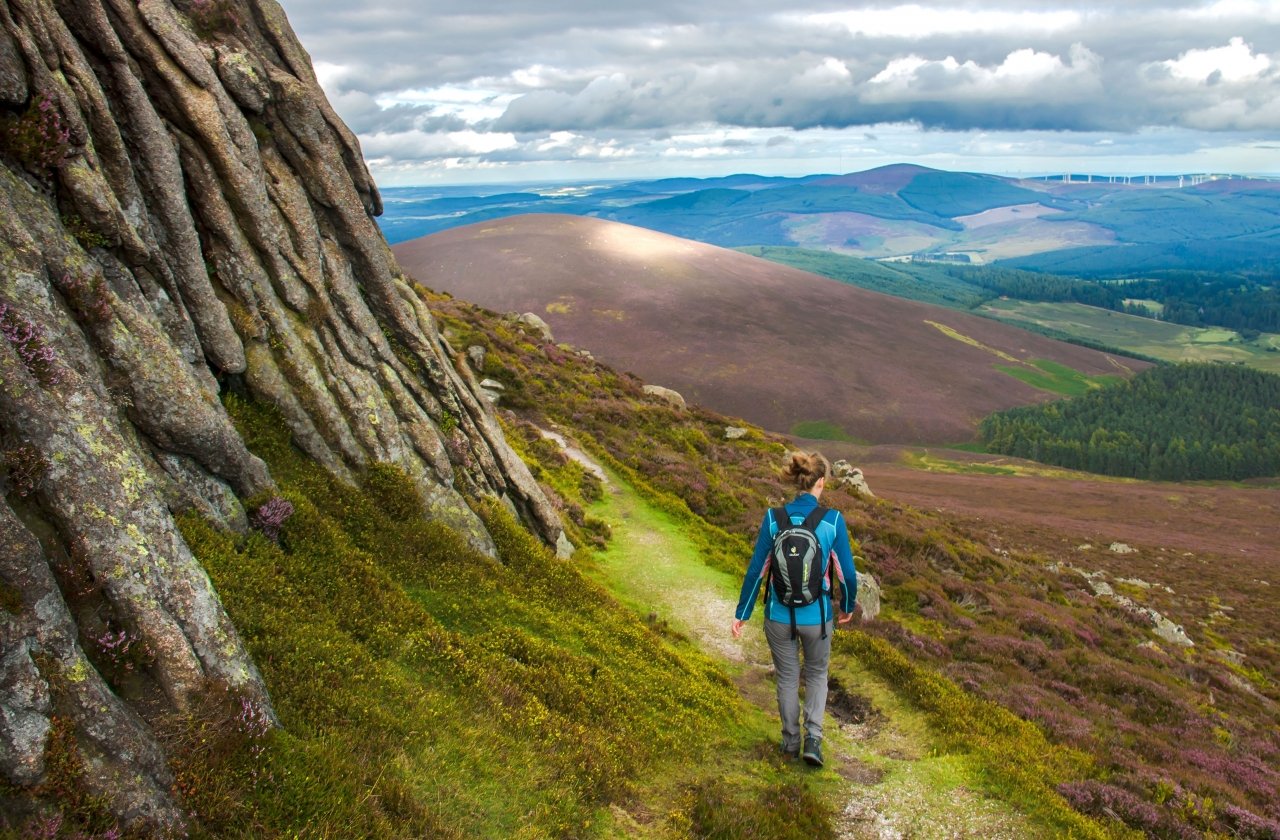





























































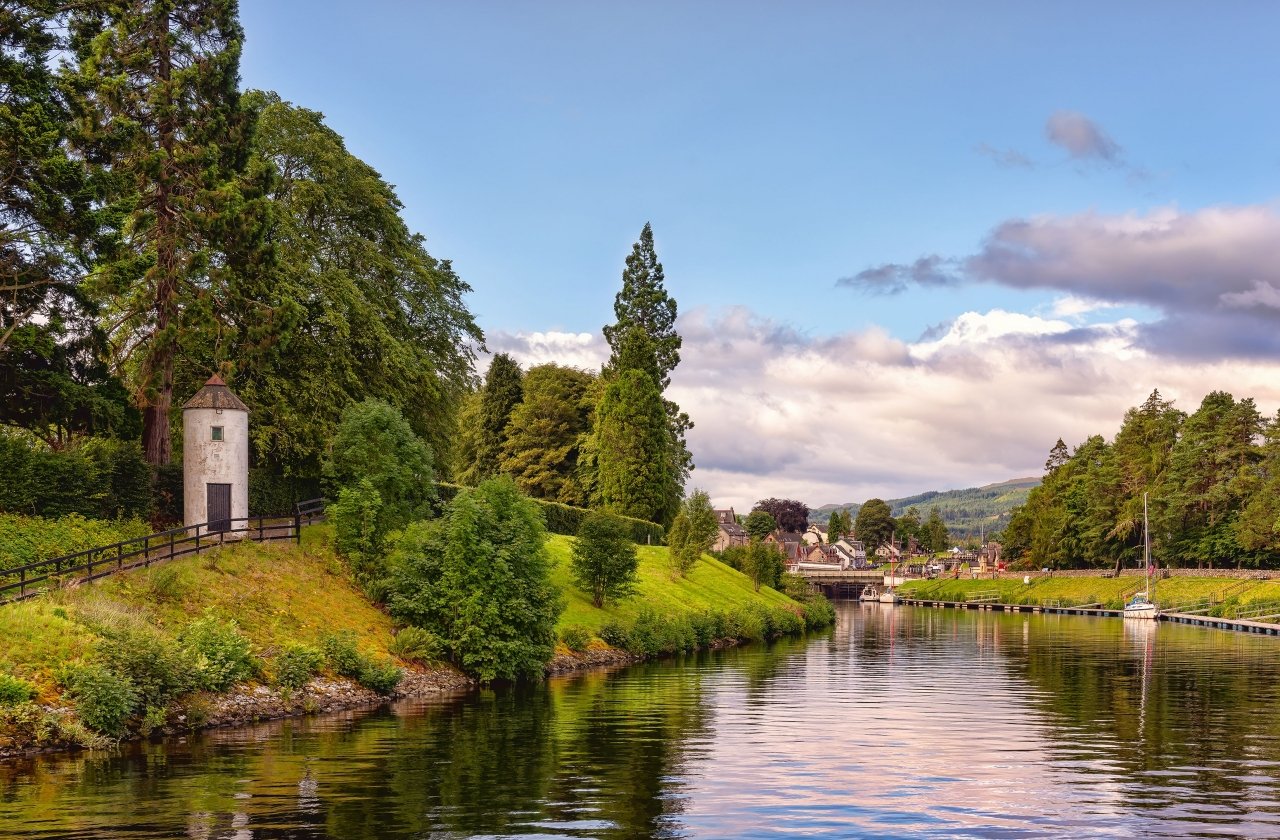



































The rugged woodlands around Balmoral Castle have been the summer getaway for British royals since Victorian times, and it’s easy to see why—it’s not easy to find! The remote privacy of Cairngorms National Park is exactly what makes this Country Walker self-guided adventure so special. Here, you’ll experience Scotland’s pristine glens and shining lochs—with exceptional hotels and seamless transportation built in. In Braemar, host of the Highland Games, your elegant hotel reflects local character with its rich mahogany furnishings, tartan draperies, and charming woodland accents. Along the way, detailed route notes and an audio-guided navigation app let you choose the pace of your discoveries—including walks around Loch Ness, an array of historic Scottish castles, and visits to a distinguished selection of fine Scotch distilleries.
Country Walkers is proud to support Wine to Water with a donation on behalf of each guest on this tour. Wine to Water is an international organization providing access to clean drinking water and emergency supplies in water-challenged regions. We believe in giving back to the places that have enriched the lives of our guests. We’re committed to identifying and supporting sustainable initiatives in a variety of areas including education, world health, economic equality, safe drinking water, the environment, and the preservation of cultural traditions.





This tour is one of our Self-Guided Walking Adventures, rated easy to moderate, with an average of 3-8 miles per day. There are daily ascents and descents of up to 1,200 feet. Options are available on some days, including a 13-mile option on Day 2. It is also possible to travel with your luggage to your next accommodation on any given day (included in the price of the tour). The terrain is sometimes gentle but also includes sustained ascents and descents on most days. Walks are on well-maintained trails combining wide paths, some of which are paved, with single-track packed dirt or grassy tracks, with roots, gravel, and loose stones at times. The trails above tree line may feel more challenging than the terrain suggests because they are exposed to the elements. The walking routes are through woodlands or framed by heather, and offer dramatic views of typical Highland scenery.
| Tour Day | Choose Your Route Options | Miles per Option | Hours per Option** | Elevation per Option*** | Activity Level |
|---|---|---|---|---|---|
| 1 | Walk | 2 | 01:00 | easy | |
| 2 | ShortMediumLong | 5.38.113.3 | 03:0004:1507:00 | 1100 | easymoderatemoderate |
| 3 | ShortLong | 33.8 | 01:3002:00 | 550 | easyeasy-moderate |
| 4 | ShortLong | 3.97.4 | 02:0004:00 | 1750 | easy-moderatemoderate |
| 5 | Walk | 4.8 | 02:30 | easy | |
| 6 | Walk | 7.2 | 03:45 | 1000 | easy-moderate |
Alternate options may be available
**Route mileage, hours, and elevation gain/loss are all approximate
***Elevation gain/loss indicated if greater than 500 feet
Itinerary
Sat, Aug 30 to Mon, Sep 8, 2025
Depart home for Scotland. The particulars of your arrival overseas are detailed with your flight itinerary.
Upon arrival at Inverness (INV) Airport, make your independent travel arrangements to your centrally located Inverness hotel. For details, refer to your Vacation Preparation Handbook.
Please note: Your hotel room may not be available until 3:30 p.m. If you arrive early, you may store your luggage with the reception desk. Please note for early morning arrivals, the hotel may charge an early check-in fee if your room is ready before the normal check-in time; this fee will be at your expense if you decide to check-in early.
Country Walkers provides you with city information that includes information and recommendations on what to see and do in Inverness. Enjoy the rest of the day at your leisure—explore the city or nearby Culloden Battlefield, rest up in the hotel, or select a local restaurant for lunch and dinner.
2 miles, easy, 250-ft. elevation gain and 225-ft. elevation loss
Meet your taxi at 1:30 p.m. at your hotel in Inverness to travel to Aberlour in Scotland’s Speyside, an area nourished by the salmon-filled River Spey and renowned for a rich whisky heritage, charming small towns, rolling hills, and fields of barley. Aberlour was once served by a railway that linked the village and the river, which today plays a central role in the outdoor lives of locals.
Upon arrival in Aberlour, set off on a warm-up walk to explore the village. Or head over to the riverside Alice Littler Park, home to the lovely Victoria Suspension Bridge, where you can pick up the mostly unpaved Linn Falls loop. The two-mile route through woodland passes the scenic Linn of Ruthrie waterfalls, perfect for a ramble to get your legs working.
Perhaps stop in the Speyside Way Visitor Center, a converted railway station in the park, for a spot of tea in the Tea Room. Or visit the Aberlour Distillery for an excellent tour and whisky tasting; it’s right next to your hotel. If you prefer sweets over whisky, pay a visit to Walkers Shortbread, the largest independent biscuit maker in the UK. This heralded institution produces 60% of all the shortbread exported from Scotland; it is also the UK’s largest biscuit exporter, serving more than 40 countries.
After an early evening orientation meeting, enjoy an included dinner at your hotel. Dining here is a treat, with all ingredients provided by local suppliers—whether game from the Ballindalloch Estate or lobster from Lossiemouth—and dishes served creatively.
Included Meals: Breakfast, Dinner
13.3 miles, moderate, 1,100-ft. elevation gain and loss (with alternate walks of 5.3 or 8.1 miles)
After a full Scottish breakfast, set out on today’s whisky and walking ramble! You walk from Aberlour to Dufftown and on to Craigellachie before looping back to Aberlour. If you wish, you can shorten your walk to five miles by skipping Craigellachie and taking a public bus or taxi (at your expense) from Dufftown back to Aberlour. Alternately, take a bus or taxi from Aberlour to Dufftown, then walk eight miles gently downhill along the river to Craigellachie and Aberlour.
You’ll be tracing a “spur” of the Speyside Way, an 80-mile footpath that connects Buckie, an old fishing town on the Moray coast, to Aviemore, a resort town in Cairngorms National Park. Smugglers and bootleggers of sorts once roamed these hills. Whisky distillers, long required to pay a government tax, once produced their prized spirits at small stills hidden in the countryside. The “gaugers,” or tax men, were often hard pressed to locate them. The route you walk today may well have been followed by any number of these whisky-making tax dodgers.
Begin directly from the hotel on an old right of way—or a “Gownie”—ascending three miles along the gentle hill that stands between Aberlour and Dufftown. It’s a quiet country road through lovely farmland with views of Ben Rinnes, the highest mountain in the Moray region. Continue on a forested track to the top of the hill, then meander downhill along a heather-clad moor and among fenced grassy fields. Dufftown soon comes into view, scenically nestled in a sheltering bowl.
The self-described “malt whisky capital of Scotland,” Dufftown hugs a tributary of the River Spey. Its main square sports a handsome clock tower and several pubs where you might grab lunch if you didn’t pack a picnic. The Balvenie and Glenfiddich distilleries are here. They host spring and fall festivals that draw whisky lovers from all over.
Your footpath first leads you to Dufftown’s Balvenie Castle, a squat ruined fortress dating to the 13th century that has watched over the glens and passes to Speyside and Elgin for centuries. This has been home to three of Scotland’s most important families. Most notably, Mary, Queen of Scots, stayed here for two days in 1562 during her campaign against the Earl of Huntly.
Continue downhill to the Balvenie and Glenfiddich distilleries, each a feast for the senses and the curiosity. At Balvenie, witness its six coopers turning barrels and see the process of mashing, fermentation, and distillation. At Glenfiddich, founded in 1887 and still a family business, stroll among the typical pagoda-roofed malting buildings. Enjoy a tasting at each distillery.
A nice stretch along a former railway line next leads you high above the fast-moving River Fiddich. The Fiddich pours into the Spey in the small village of Craigellachie, your final destination before returning to Aberlour. Several pubs invite you to pause for a while, or you can tour and taste at the Craigellachie Distillery. Before you continue, take time to admire the first cast-iron bridge laid in Scotland. The elegant span over the River Spey—engineered by local hero Thomas Telford and today a footbridge—has provided passage across the waters for more than 200 years.
Make your way back to Aberlour via the Speyside Way, following the River Spey. As you walk, admire the fishing huts that line both banks and watch as fishermen head out for the catch of the day.
Dinner tonight will once again be provided on-site at your lodgings.
Included Meals: Breakfast, Dinner
3 miles, easy, 200-ft. elevation gain and loss (plus a 1.2-mile optional detour to Braemar Castle), or 3.8 miles, easy to moderate, 550-ft. elevation gain and loss
This morning, a 1.25-hr taxi ride takes you to the delightful storybook village of Braemar, located at the heart of the pristine Cairngorms National Park, the UK’s largest and one of the most magnificently scenic parks in the world. Five of Scotland’s highest peaks are here, each one skirted with ancient forests, and it provides habitats for golden eagles, ospreys, red deer, and even reindeer.
Braemar is the gateway to it all. Marking the eastern side of the park, it was a strategic spot for Scotland’s earliest kings, as several castle remains attest. Walkers come from all over the world to take in the spectacular vistas, stroll among woodland scenery, enjoy the stone-clad charms of the village, and visit the imposing Braemar Castle with its 400-year highland history.
Choose from two walking options today, each of which gives you the opportunity to explore the castle on the outskirts of the village. If you’re feeling energetic, try both! You can set out directly from the Fife Arms hotel, a former hunting lodge of Queen Victoria and your home for the next two nights.
The easy River Dee loop walk meanders “Deeside,” as locals might say. But first, you follow the narrow tributary known as Clunie Water as it tumbles toward the Dee. Lovely views up and down the valley unfold en route to the convergence of these two waterways and follow the Dee for a while. Later you leave the River Dee behind at the mill of Coull and climb a gentle hill into a birchwood stand and back to the village. If you wish, you may detour about 0.6 mile off the trail and follow a paved path to Braemar Castle, an L-shaped tower house with star-shaped curtain walls. The fortification dates to the 17th century, when the Earl of Mar built it as a hunting lodge. Since then, it has had a turbulent highland past.
Or enjoy an easy-to-moderate loop walk to Lion’s Face and the Cromlins. Leave the village and climb into the hills through pinewoods and rolling fields. As you approach Lion’s Face rock, take in superb views of Braemar, the Upper Dee Valley, the distant Cairngorm Mountains, and Invercauld House, the private home of the Farquharson family that once owned Braemar Castle. You also pass a pile of stones that mark the former home of the Thompsons, relatives of John Brown, Queen Victoria’s famous servant. It’s said that the Queen came here often to deliver tobacco and tea. Then continue along the backside of the hills and return to the village, perhaps stopping to explore Braemar Castle en route.
After your walk, take time to explore more of Braemar. Admire the church, with its barn-like interior. Tour the Lochnagar Distillery, which once held the royal warrant from Queen Victoria and Prince Albert. Hire a car or take the bus nine miles to Balmoral Castle, a royal summer residence. Or browse some of the thousands of artworks and antiques at your magnificent hotel, the Fife Arms.
Dinner is on your own this evening. You’ll find many choices in the village, or sample the fine menu at the hotel.
Included Meals: Breakfast
3.9 miles, easy to moderate, 400-ft. elevation gain and loss OR 7.4 miles, moderate, 1,750-ft. elevation gain and loss
Start the day with a delicious and hearty breakfast in the Clunie dining room at your hotel, perhaps traditional Scottish porridge or a full plate of eggs, sausage, bacon, black pudding, beans, and a scone. When you’re ready, head out on your choice of walks directly from the front door.
Whereas yesterday’s walk brought you east of the village, today’s leads you either to the west or the south. The Morrone Birkwood loop (“birk” is Scots for birch) delivers you from deciduous trees in the valley into a nature reserve teeming with the finest examples of downy birchwoods in the UK. Among them, a profusion of juniper thrives, an enduring holdover of the old woods that once cloaked the Cairngorms. Follow a single-track trail into a massive stand of birch. The lichen that hangs on them is evidence of the clean air here—and of the forest’s age. Enjoy the fragrant juniper undergrowth as you proceed to the Morrone Viewpoint and other stunning overlooks of the Cairngorms, upper Deeside, and the valley blanketed with fields and forests. A route through open moorland and over small streams rounds out your ramble.
If you prefer to get in some altitude, take on the Morrone ascent, a superb hill walk with magnificent views. Morrone is classified as a “corbett,” one of the 222 mountains in Scotland that reach to between 2,500 and 3,000 feet. You reach the summit via a birchwood forest and open moorland. Unimpeded 360-degree views of the Cairngorms and Braemar await. Take time to take in spectacular vistas from the summit, then a clear track and old road along the River Clunie leads you back to the village.
For dinner this evening, you can dine at the hotel or choose from our list of recommended restaurants in town.
Included Meals: Breakfast
4.9 miles, easy, 100-ft. elevation gain and loss
After another incredible breakfast, a three-hour taxi ride takes you through Cairngorms National Park to the Bridge of Oich, also known as Victoria Bridge. There’ll be a stop along the way to stretch your legs and grab a packed lunch for later. The Bridge of Oich, protected by Environmental Scotland, was opened in 1854 to carry traffic over the River Oich at the northern end of Loch Oich. Today it is an active pedestrian path and the starting point of your flat, easy walk to Fort Augustus and Loch Ness, about five miles away.
Today you join the ranks of Scotland’s most enthusiastic walkers as you trace part of the Great Glen Way, one of the country’s most beloved trails. It stretches 78 miles from Fort William in the southwest to Inverness in the northeast, hugging the Caledonian Canal—and slicing through Scotland’s longest glen—for most of its length. Your five-mile stroll follows the towpath, passing the Bridge House Tea Garden, pretty woodlands, Cullochy and Kyltra Locks, tidy lock-keepers’ cottages, and an array of pleasure boats. Your walk concludes at Fort Augustus, where the canal meets the world-famous Loch Ness.
Fort Augustus is one of those highland towns that has retained its charms despite its popularity. Its location on the south shores of Loch Ness make it a favored spot for those in search of the lake’s legendary creature. But locals prefer to just sit and watch leisure boats head from the canal into the loch. The second largest of Scotland’s lakes, Loch Ness stretches some 23 miles from Fort William in the south to Inverness in the north. Even with all its notoriety, it remains one of the most pristine and stirring sights in the highlands, particularly when a mist sits on the water and the hills on either side seem to rise from clouds.
As for Fort Augustus, the town saw its start in the 1730s, when British General Wade built a fort here in the wake of the Jacobite Rising of 1715. He named it after the Duke of Cumberland, Prince William Augustus. The name stuck, even after the fort was sold to the Lovat family—for whom your hotel for the next two nights was named. If you have time upon your arrival, visit the interesting Caledonian Canal Heritage Centre, which chronicles the construction and history of this impressive manmade waterway. Perhaps—today or tomorrow—embark an hour-long cruise on the atmospheric waters of Loch Ness.
Dinner is on your own. The Station Road Restaurant at your hotel is quite popular with locals, serving thoughtfully prepared dishes of fresh seasonal ingredients in a refined setting that befits your grand surroundings. The menu varies, but you might savor Orkney Scallop, Highland Gouda, or Duck Liver Twiglet.
Included Meals: Breakfast
7.2 miles, easy to moderate, 1000-ft. elevation gain and loss
Following breakfast at your hotel—a continental buffet and a hot meal showcasing some great Scottish fare such as eggs, smoked haddock or salmon, porridge, and potato scone—a 30-minute taxi ride delivers you to the walk’s start at the Forestry Commission. This is the tiny hamlet of Inverfarigaig, just above the eastern shoreline of Loch Ness. Towering trees, plentiful wildlife, and spectacular views of Loch Ness’ south shore await you in the moss-covered woodlands of Farigaig Forest.
In this haven for colorful wildflowers, butterflies, Roe and Sika deer, and red squirrels, you wind your way along the South Loch Ness Trail to an overlook toward a dramatic rocky outcrop. Keep an eye out for hidden lochans (small lochs) and the remains of an ancient fort at Dun Dearduil. The path continues, rising and falling through heather and birch as it crosses several ridges that provide sweeping views in all directions. You arrive at the Upper Foyers, where you can take a break if you wish at the Foyers Waterfall Café.
From here, you descend through woodlands to Lower Foyers, admiring views of one of the most spectacular waterfalls in the highlands. So stunning are these lovely cascades that they have been attracting visitors since Victorian times; they even inspired Robert Burns to compose a poem about them in 1787: “Among the heathy hills and ragged woods/The roaring Foyers pours its mossy floods.” Return to Inverfarigaig via a variety of scenic paths directly on the shore of Loch Ness.
Return to Fort Augustus with your afternoon taxi. Dinner this evening is on your own.
Included Meals: Breakfast
A one-hour taxi ride after breakfast takes you to Inverness, where you are free to enjoy a final day of exploration (lunch and dinner are on your own).
Included Meals: Breakfast
After an included breakfast*, make your own independent travel arrangements to Inverness Airport for your onward travels. For details, refer to your Vacation Preparation Handbook.
*For guests with early-morning departures, breakfast at the hotel may not be available. Please check with the front desk to verify the times that breakfast is served.
Included Meals: Breakfast
Mon, Sep 1 to Sun, Sep 7, 2025
2 miles, easy, 250-ft. elevation gain and 225-ft. elevation loss
Meet your taxi at 1:30 p.m. in Inverness to travel to Aberlour in Scotland’s Speyside, an area nourished by the salmon-filled River Spey and renowned for a rich whisky heritage, charming small towns, rolling hills, and fields of barley. Aberlour was once served by a railway that linked the village and the river, which today plays a central role in the outdoor lives of locals.
Upon arrival in Aberlour, set off on a warm-up walk to explore the village. Or head over to the riverside Alice Littler Park, home to the lovely Victoria Suspension Bridge, where you can pick up the mostly unpaved Linn Falls loop. The two-mile route through woodland passes the scenic Linn of Ruthrie waterfalls, perfect for a ramble to get your legs working.
Perhaps stop in the Speyside Way Visitor Center, a converted railway station in the park, for a spot of tea in the Tea Room. Or visit the Aberlour Distillery for an excellent tour and whisky tasting; it’s right next to your hotel. If you prefer sweets over whisky, pay a visit to Walkers Shortbread, the largest independent biscuit maker in the UK. This heralded institution produces 60% of all the shortbread exported from Scotland; it is also the UK’s largest biscuit exporter, serving more than 40 countries.
After an early evening orientation meeting, enjoy an included dinner at your hotel. Dining here is a treat, with all ingredients provided by local suppliers—whether game from the Ballindalloch Estate or lobster from Lossiemouth—and dishes served creatively.
Included Meals: Dinner
13.3 miles, moderate, 1,100-ft. elevation gain and loss (with alternate walks of 5.3 or 8.1 miles)
After a full Scottish breakfast, set out on today’s whisky and walking ramble! You walk from Aberlour to Dufftown and on to Craigellachie before looping back to Aberlour. If you wish, you can shorten your walk to five miles by skipping Craigellachie and taking a public bus or taxi (at your expense) from Dufftown back to Aberlour. Alternately, take a bus or taxi from Aberlour to Dufftown, then walk eight miles gently downhill along the river to Craigellachie and Aberlour.
You’ll be tracing a “spur” of the Speyside Way, an 80-mile footpath that connects Buckie, an old fishing town on the Moray coast, to Aviemore, a resort town in Cairngorms National Park. Smugglers and bootleggers of sorts once roamed these hills. Whisky distillers, long required to pay a government tax, once produced their prized spirits at small stills hidden in the countryside. The “gaugers,” or tax men, were often hard pressed to locate them. The route you walk today may well have been followed by any number of these whisky-making tax dodgers.
Begin directly from the hotel on an old right of way—or a “Gownie”—ascending three miles along the gentle hill that stands between Aberlour and Dufftown. It’s a quiet country road through lovely farmland with views of Ben Rinnes, the highest mountain in the Moray region. Continue on a forested track to the top of the hill, then meander downhill along a heather-clad moor and among fenced grassy fields. Dufftown soon comes into view, scenically nestled in a sheltering bowl.
The self-described “malt whisky capital of Scotland,” Dufftown hugs a tributary of the River Spey. Its main square sports a handsome clock tower and several pubs where you might grab lunch if you didn’t pack a picnic. The Balvenie and Glenfiddich distilleries are here. They host spring and fall festivals that draw whisky lovers from all over.
Your footpath first leads you to Dufftown’s Balvenie Castle, a squat ruined fortress dating to the 13th century that has watched over the glens and passes to Speyside and Elgin for centuries. This has been home to three of Scotland’s most important families. Most notably, Mary, Queen of Scots, stayed here for two days in 1562 during her campaign against the Earl of Huntly.
Continue downhill to the Balvenie and Glenfiddich distilleries, each a feast for the senses and the curiosity. At Balvenie, witness its six coopers turning barrels and see the process of mashing, fermentation, and distillation. At Glenfiddich, founded in 1887 and still a family business, stroll among the typical pagoda-roofed malting buildings. Enjoy a tasting at each distillery.
A nice stretch along a former railway line next leads you high above the fast-moving River Fiddich. The Fiddich pours into the Spey in the small village of Craigellachie, your final destination before returning to Aberlour. Several pubs invite you to pause for a while, or you can tour and taste at the Craigellachie Distillery. Before you continue, take time to admire the first cast-iron bridge laid in Scotland. The elegant span over the River Spey—engineered by local hero Thomas Telford and today a footbridge—has provided passage across the waters for more than 200 years.
Make your way back to Aberlour via the Speyside Way, following the River Spey. As you walk, admire the fishing huts that line both banks and watch as fishermen head out for the catch of the day.
Dinner tonight will once again be provided on-site at your lodgings.
Included Meals: Breakfast, Dinner
3 miles, easy, 200-ft. elevation gain and loss (plus a 1.2-mile optional detour to Braemar Castle), or 3.8 miles, easy to moderate, 550-ft. elevation gain and loss
This morning, a 1.25-hr taxi ride takes you to the delightful storybook village of Braemar, located at the heart of the pristine Cairngorms National Park, the UK’s largest and one of the most magnificently scenic parks in the world. Five of Scotland’s highest peaks are here, each one skirted with ancient forests, and it provides habitats for golden eagles, ospreys, red deer, and even reindeer.
Braemar is the gateway to it all. Marking the eastern side of the park, it was a strategic spot for Scotland’s earliest kings, as several castle remains attest. Walkers come from all over the world to take in the spectacular vistas, stroll among woodland scenery, enjoy the stone-clad charms of the village, and visit the imposing Braemar Castle with its 400-year highland history.
Choose from two walking options today, each of which gives you the opportunity to explore the castle on the outskirts of the village. If you’re feeling energetic, try both! You can set out directly from the Fife Arms hotel, a former hunting lodge of Queen Victoria and your home for the next two nights.
The easy River Dee loop walk meanders “Deeside,” as locals might say. But first, you follow the narrow tributary known as Clunie Water as it tumbles toward the Dee. Lovely views up and down the valley unfold en route to the convergence of these two waterways and follow the Dee for a while. Later you leave the River Dee behind at the mill of Coull and climb a gentle hill into a birchwood stand and back to the village. If you wish, you may detour about 0.6 mile off the trail and follow a paved path to Braemar Castle, an L-shaped tower house with star-shaped curtain walls. The fortification dates to the 17th century, when the Earl of Mar built it as a hunting lodge. Since then, it has had a turbulent highland past.
Or enjoy an easy-to-moderate loop walk to Lion’s Face and the Cromlins. Leave the village and climb into the hills through pinewoods and rolling fields. As you approach Lion’s Face rock, take in superb views of Braemar, the Upper Dee Valley, the distant Cairngorm Mountains, and Invercauld House, the private home of the Farquharson family that once owned Braemar Castle. You also pass a pile of stones that mark the former home of the Thompsons, relatives of John Brown, Queen Victoria’s famous servant. It’s said that the Queen came here often to deliver tobacco and tea. Then continue along the backside of the hills and return to the village, perhaps stopping to explore Braemar Castle en route.
After your walk, take time to explore more of Braemar. Admire the church, with its barn-like interior. Tour the Lochnagar Distillery, which once held the royal warrant from Queen Victoria and Prince Albert. Hire a car or take the bus nine miles to Balmoral Castle, a royal summer residence. Or browse some of the thousands of artworks and antiques at your magnificent hotel, the Fife Arms.
Dinner is on your own this evening. You’ll find many choices in the village, or sample the fine menu at the hotel.
Included Meals: Breakfast
3.9 miles, easy to moderate, 400-ft. elevation gain and loss OR 7.4 miles, moderate, 1,750-ft. elevation gain and loss
Start the day with a delicious and hearty breakfast in the Clunie dining room at your hotel, perhaps traditional Scottish porridge or a full plate of eggs, sausage, bacon, black pudding, beans, and a scone. When you’re ready, head out on your choice of walks directly from the front door.
Whereas yesterday’s walk brought you east of the village, today’s leads you either to the west or the south. The Morrone Birkwood loop (“birk” is Scots for birch) delivers you from deciduous trees in the valley into a nature reserve teeming with the finest examples of downy birchwoods in the UK. Among them, a profusion of juniper thrives, an enduring holdover of the old woods that once cloaked the Cairngorms. Follow a single-track trail into a massive stand of birch. The lichen that hangs on them is evidence of the clean air here—and of the forest’s age. Enjoy the fragrant juniper undergrowth as you proceed to the Morrone Viewpoint and other stunning overlooks of the Cairngorms, upper Deeside, and the valley blanketed with fields and forests. A route through open moorland and over small streams rounds out your ramble.
If you prefer to get in some altitude, take on the Morrone ascent, a superb hill walk with magnificent views. Morrone is classified as a “corbett,” one of the 222 mountains in Scotland that reach to between 2,500 and 3,000 feet. You reach the summit via a birchwood forest and open moorland. Unimpeded 360-degree views of the Cairngorms and Braemar await. Take time to take in spectacular vistas from the summit, then a clear track and old road along the River Clunie leads you back to the village.
For dinner this evening, you can dine at the hotel or choose from our list of recommended restaurants in town.
Included Meals: Breakfast
4.9 miles, easy, 100-ft. elevation gain and loss
After another incredible breakfast, a three-hour taxi ride takes you through Cairngorms National Park to the Bridge of Oich, also known as Victoria Bridge. There’ll be a stop along the way to stretch your legs and grab a packed lunch for later. The Bridge of Oich, protected by Environmental Scotland, was opened in 1854 to carry traffic over the River Oich at the northern end of Loch Oich. Today it is an active pedestrian path and the starting point of your flat, easy walk to Fort Augustus and Loch Ness, about five miles away.
Today you join the ranks of Scotland’s most enthusiastic walkers as you trace part of the Great Glen Way, one of the country’s most beloved trails. It stretches 78 miles from Fort William in the southwest to Inverness in the northeast, hugging the Caledonian Canal—and slicing through Scotland’s longest glen—for most of its length. Your five-mile stroll follows the towpath, passing the Bridge House Tea Garden, pretty woodlands, Cullochy and Kyltra Locks, tidy lock-keepers’ cottages, and an array of pleasure boats. Your walk concludes at Fort Augustus, where the canal meets the world-famous Loch Ness.
Fort Augustus is one of those highland towns that has retained its charms despite its popularity. Its location on the south shores of Loch Ness make it a favored spot for those in search of the lake’s legendary creature. But locals prefer to just sit and watch leisure boats head from the canal into the loch. The second largest of Scotland’s lakes, Loch Ness stretches some 23 miles from Fort William in the south to Inverness in the north. Even with all its notoriety, it remains one of the most pristine and stirring sights in the highlands, particularly when a mist sits on the water and the hills on either side seem to rise from clouds.
As for Fort Augustus, the town saw its start in the 1730s, when British General Wade built a fort here in the wake of the Jacobite Rising of 1715. He named it after the Duke of Cumberland, Prince William Augustus. The name stuck, even after the fort was sold to the Lovat family—for whom your hotel for the next two nights was named. If you have time upon your arrival, visit the interesting Caledonian Canal Heritage Centre, which chronicles the construction and history of this impressive manmade waterway. Perhaps—today or tomorrow—embark an hour-long cruise on the atmospheric waters of Loch Ness.
Dinner is on your own. The Station Road Restaurant at your hotel is quite popular with locals, serving thoughtfully prepared dishes of fresh seasonal ingredients in a refined setting that befits your grand surroundings. The menu varies, but you might savor Orkney Scallop, Highland Gouda, or Duck Liver Twiglet.
Included Meals: Breakfast
7.2 miles, easy to moderate, 1000-ft. elevation gain and loss
Following breakfast at your hotel—a continental buffet and a hot meal showcasing some great Scottish fare such as eggs, smoked haddock or salmon, porridge, and potato scone—a 30-minute taxi ride delivers you to the walk’s start at the Forestry Commission. This is the tiny hamlet of Inverfarigaig, just above the eastern shoreline of Loch Ness. Towering trees, plentiful wildlife, and spectacular views of Loch Ness’ south shore await you in the moss-covered woodlands of Farigaig Forest.
In this haven for colorful wildflowers, butterflies, Roe and Sika deer, and red squirrels, you wind your way along the South Loch Ness Trail to an overlook toward a dramatic rocky outcrop. Keep an eye out for hidden lochans (small lochs) and the remains of an ancient fort at Dun Dearduil. The path continues, rising and falling through heather and birch as it crosses several ridges that provide sweeping views in all directions. You arrive at the Upper Foyers, where you can take a break if you wish at the Foyers Waterfall Café.
From here, you descend through woodlands to Lower Foyers, admiring views of one of the most spectacular waterfalls in the highlands. So stunning are these lovely cascades that they have been attracting visitors since Victorian times; they even inspired Robert Burns to compose a poem about them in 1787: “Among the heathy hills and ragged woods/The roaring Foyers pours its mossy floods.” Return to Inverfarigaig via a variety of scenic paths directly on the shore of Loch Ness.
Return to Fort Augustus with your afternoon taxi. Dinner this evening is on your own.
Included Meals: Breakfast
A one-hour taxi ride after breakfast takes you to Inverness, where you can make your connections home or onward, or spend an additional day or two in this charming Scottish city.
Included Meals: Breakfast
Arrival Day & Tour Day 7
Glenmoriston Townhouse Hotel
A short walk from the city center of Inverness, the Glenmoriston Townhouse Hotel is one of the most highly regarded in the capital of the Highlands. The 30-room hotel is perched on the River Ness on a tree-lined terrace, lending the luxury property an intimate feel. Rooms are handsomely designed with warm, wood furnishings and tartan touches. Fine dining ends your days at the Contrast Brasserie, where locally sourced ingredients elevate brilliant culinary preparations. And the stylish Piano Bar offers a selection of 260 malt whiskies and 50 gins.











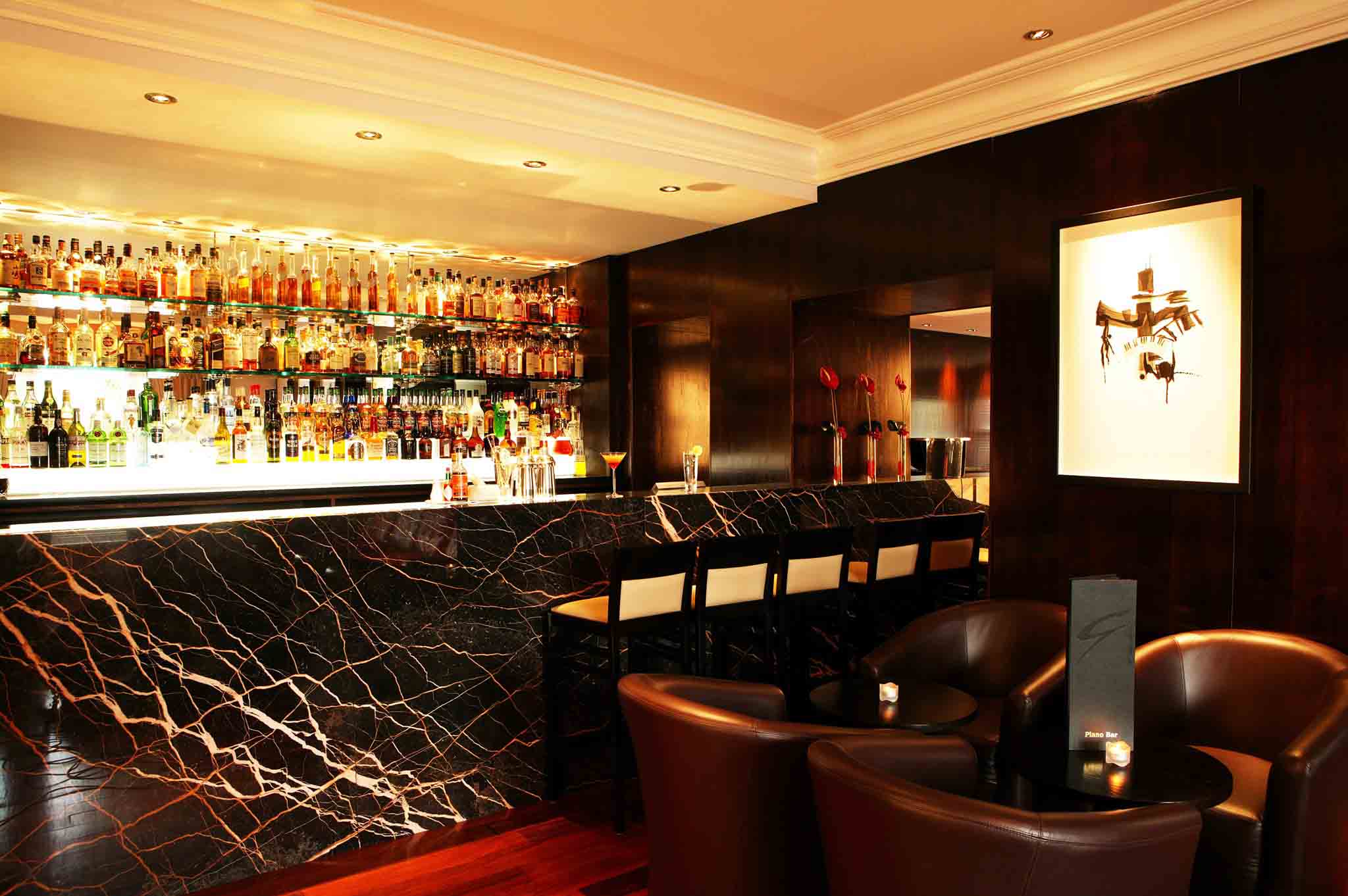



Days 1, 2
The Dowans Hotel
Stylish and cozy and built in 1888 in Scottish baronial style, the boutique Dowans Hotel is grand yet small, with only 16 rooms. Victorian charms are everywhere, yet this modern inn caters to a 21st-century clientele. Each room has its own character, designed with muted tones and soft splashes of color. In front, a manicured lawn looks over the Spey Valley, while an ornamental pond and fountain in back is watched over by the summit of Ben Rimmes. The ’57 Restaurant (named for the parallel on which it sits from the equator) brings in venison from a local estate, fish from Portsoy, and lobster from Lossiemouth. And, of course, it boasts a whisky selection from some 500 distilleries in the Speyside region.

















Days 3, 4
The Fife Arms
A former hunting lodge of Queen Victoria and sometimes called an “Art Hotel,” the Fife Arms is a glorious centerpiece of Braemar. Renovated by a pair of Scottish art dealers, it exudes the character of its original age with a twist. Its 46 rooms may seem plucked from 19th-century Scotland, but they also inspire a sense of childlike wonder for the way they infuse playfulness into history. Modern art peppers the common areas, too, creating an atmosphere that’s comfortable for all. Rooms are designed by theme; during your stay, relax in a “Nature and Poetry” room, adorned with objects inspired by the natural world and words by Scottish poet Alec Finlay. Treat yourself to a facial or massage at the Albamhor Spa and a stellar meal at The Flying Stag—its namesake protruding from the wall behind the bar.











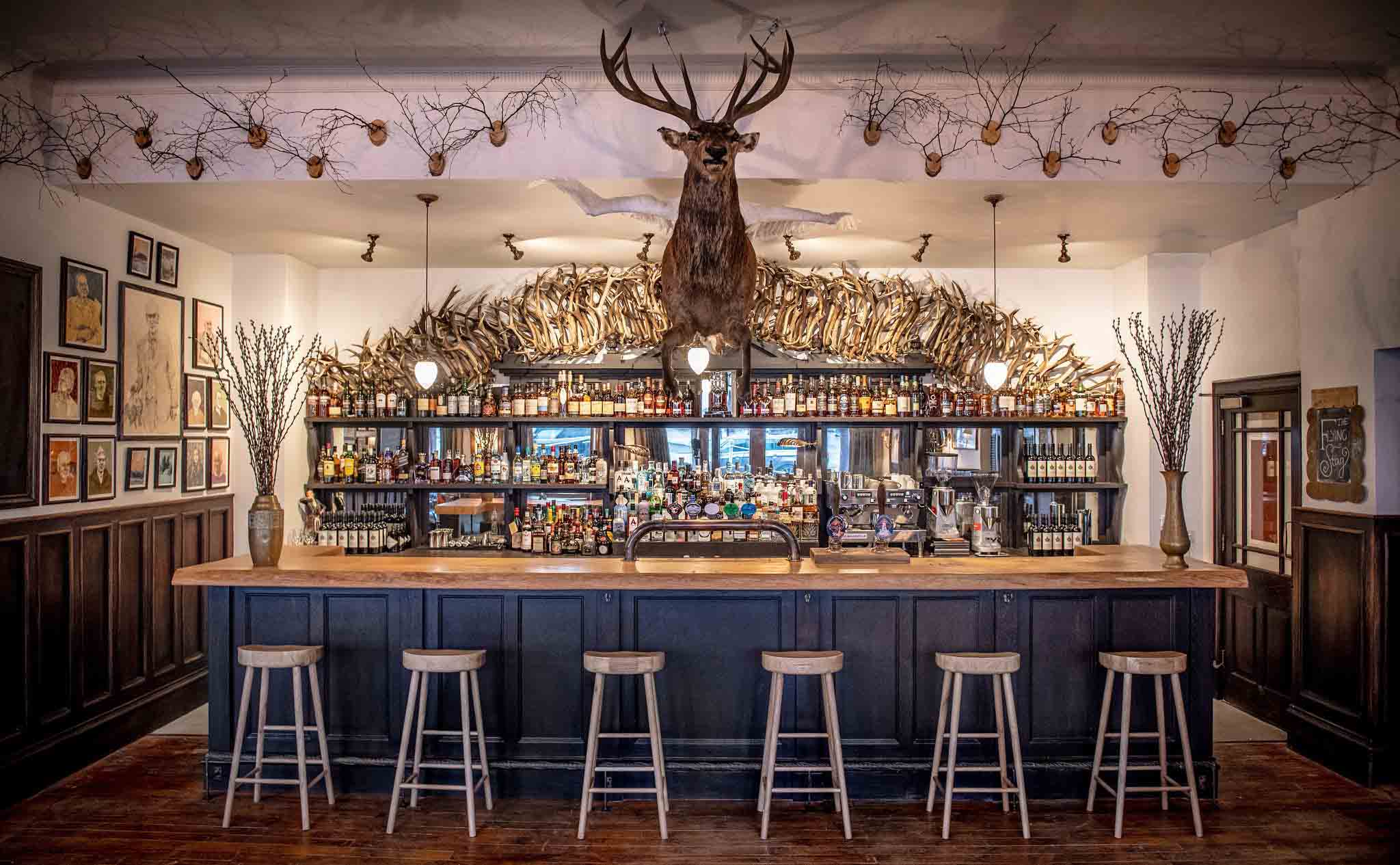

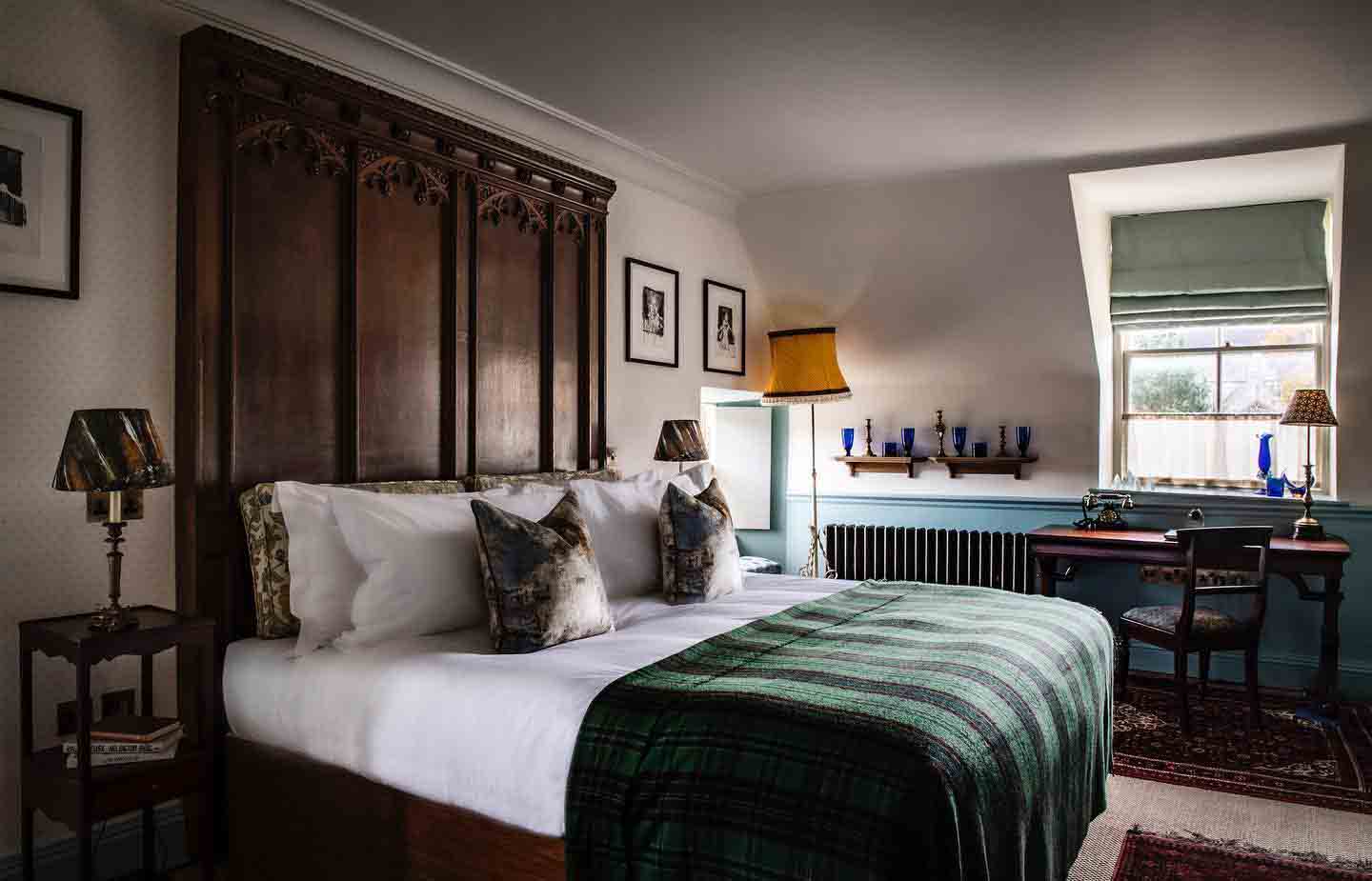

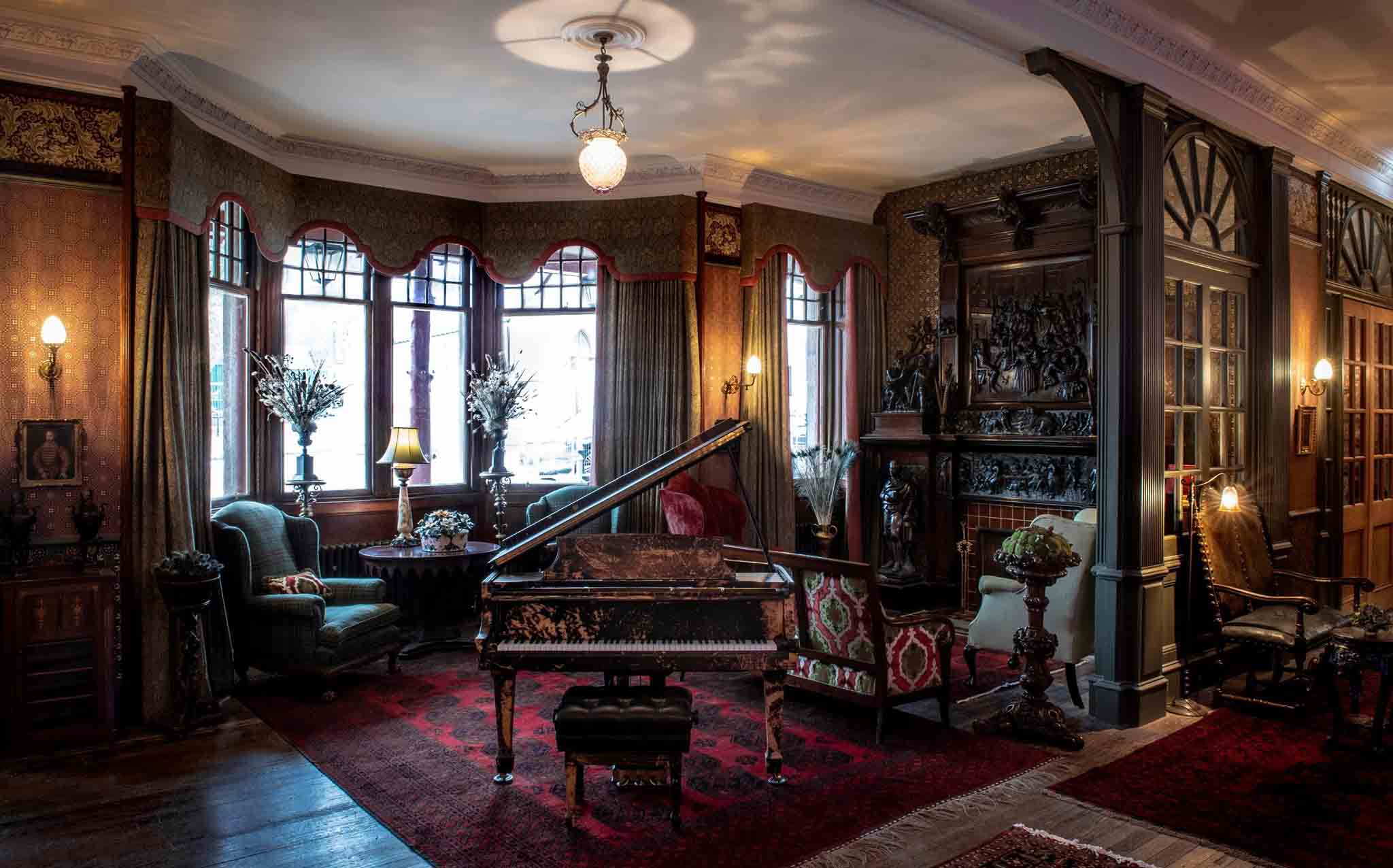

Days 5, 6
The Lovat Loch Ness
Once a hunting lodge and now an inviting eco-conscious inn, the luxurious Lovat Loch Ness overlooks the Caledonian Canal and the lake from a beautifully manicured lawn. Since 1869, it has been lodging travelers; today, you’ll experience a blend of Highland heritage and contemporary charm in rooms bathed in natural lighting and bright colors. Station Road and The Waypoint, the two dining venues, rely on local providers and foraged ingredients to ensure the freshest cuisine possible, all served with a flair for artistic presentation.











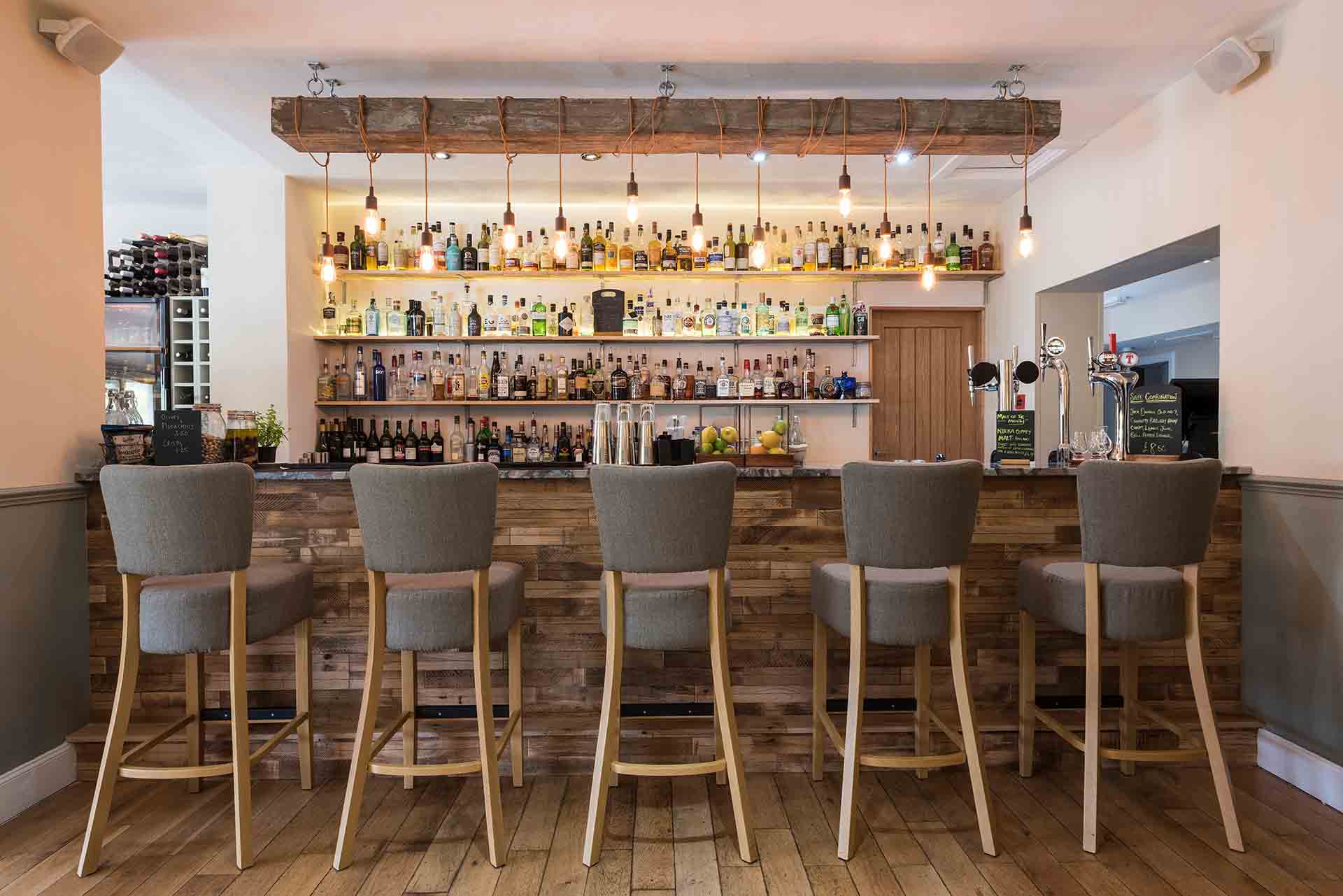







What's Included |
Tour Only | Air Package |
|---|---|---|
| Boutique accommodations |
|
|
| 8 on-tour meals: 6 breakfasts and 2 dinners |
|
|
| Ride with GPS (custom downloadable GPS route notes and turn-by-turn voice navigation; smartphone required) |
|
|
| Orientation meeting with a Country Walkers representative |
|
|
| Local representative available 24/7 |
|
|
| Scheduled on-tour taxi and luggage transportation (Please note: if unable to walk, it is possible to travel with your luggage from one accommodation to the next at no additional charge) |
|
|
| Roundtrip international airfare | Not Included |
|
| Business-class upgrades available | Not Included |
|
| Two extra nights in Inverness | Not Included |
|
| Pre- and post-tour breakfasts | Not Included |
|
| Detailed information for your independent travel to/from arrival and departure airports | Not Included |
|
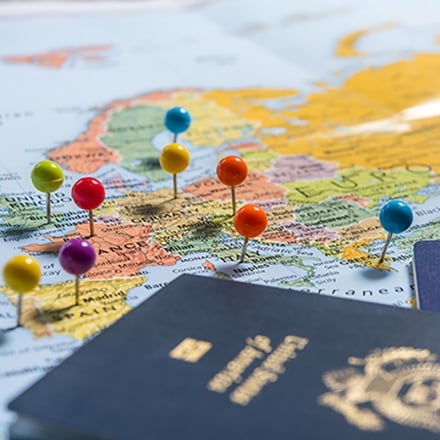




Please note: Special savings cannot be combined with any other offer. Standard Terms & Conditions apply when purchasing this trip. Prices include all airline surcharges and Government taxes and fees. Ask our Tour Consultants for details. Every effort has been made to produce this information accurately. We reserve the right to correct errors. Prices are based on preferences selected above, including meals and sightseeing as specified in What’s Included. All prices are subject to change. Departure dates and prices shown may be updated several times daily, and apply to new bookings only.


What a wonderful vacation, I got to experience EVERY important element of Scotland (culture, food, people, and history) in a very authentic way - thank you Country Walkers! The premium accommodations, logistics and transfers, and trail maps were fantastic, I was able to focus on the journey instead of details and planning.
Braveheart, Canada
Scotland: The Scottish Highlands & Cairngorms National Park


0 of 4
Tours Selected
We highly recommend accessing our website using a different browser (such as Google Chrome, Mozilla Firefox, Safari, or Microsoft Edge). Microsoft is transitioning away from Internet Explorer and towards their new internet browser platform, Microsoft Edge. Because of this, you may experience limited functionality accessing this site using Internet Explorer.